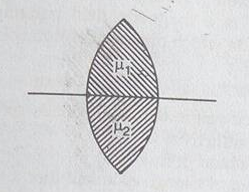Which of the following are true for cathode ray?
A
It travels along straight lines
B
It emits X-ray when strikes a metal
C
It is an electromagnetic wave
D
It is not deflected by magnetic field
Video Solution
Text Solution
The correct Answer is:A, B, C
|
Answer
Step by step video, text & image solution for Which of the following are true for cathode ray? by Physics experts to help you in doubts & scoring excellent marks in Class 12 exams.
Updated on:21/07/2023Topper's Solved these Questions
- ELECTRIC CURRENT THROUGH GASESBOOK - HC VERMACHAPTER - ELECTRIC CURRENT THROUGH GASESEXERCISE - Exercises
23 Videos
- ELECTRIC CURRENT THROUGH GASESBOOK - HC VERMACHAPTER - ELECTRIC CURRENT THROUGH GASESEXERCISE - Objective 1
9 Videos
- ELECTRIC CURRENT IN CONDUCTORSBOOK - HC VERMACHAPTER - ELECTRIC CURRENT IN CONDUCTORSEXERCISE - Exercises
84 Videos
- ELECTRIC FIELD AND POTENTIALBOOK - HC VERMACHAPTER - ELECTRIC FIELD AND POTENTIALEXERCISE - Exercises
75 Videos
Similar Questions
Knowledge Check
Which of the following is never true for cathode rays?
AThey possess kinetic energyBThey are electromagnetic wavesCThey produce heatDThey produce mechanical pressure.Which of the following is correct for cathode rays in discharge tube
AIndependent of the nature of the cathodeBIndependent of the nature of the gasCDeflection is observed in presence of electric and magnetic fieldDAll the aboveWhich of the following is correct for cathode rays in discharge tube
AIndependent of the nature of the cathodeBIndependent of the nature of the gasCDeflection is observed in presence of electric and magnetic fieldDAll the above
Which of the following is/are not true for x−rays?
View SolutionWhich of the following statementregarding cathode rays is not currect ?
View SolutionWhich of the following is true for rays coming from infinity ?

View SolutionWhich of the following is true for rays coming from infinity ?

View SolutionWhich of the following os not true regarding cathode rays?
View Solution
